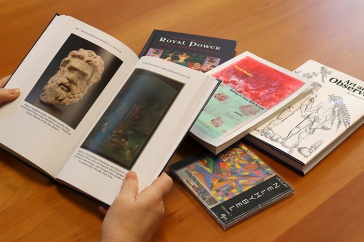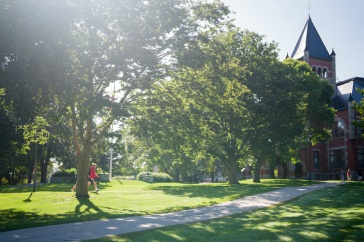Melinda White, senior lecturer in English, won the 2021 Dean’s Award for Technological Creativity in the Curriculum in the College of Liberal Arts. Ekaterina Burvikova, lecturer in Russian in the Department of Languages, Literatures and Cultures won second place. This annual award recognizes curricular innovations through the use of technology.
The Dean’s Award was instituted by COLA’s Dean Michele Dillon early last year — before COVID spurred new instructional innovation — as a way to recognize and reward the work that she had been seeing throughout the College.
“I have been impressed with the creative ways in which COLA faculty promote student engagement and inclusive group-learning activities through the use of technology,” says Dillon. “Their ability to inspire, guide and engage students in achieving their academic goals has been noteworthy and I wanted a way to acknowledge and support that work.”
White teaches three digital courses, all part of the text, business writing and digital studies option within the English major.
“My courses don’t just apply technology to teaching, but rather are steeped in digital creativity from the inside out — content, delivery and application,” says White. “I definitely use technology in the classroom, but what students read and what they make are the real examples of digital creativity.”
Students study and analyze electronic forms of literature and use digital media to create their own works. In her foundational courses, they compose video, Google Maps and hypertext essays. An advanced course examines multimodal literacies more deeply and includes White’s current research on installation art, and augmented and virtual realities (VR). In the digital lab, students work on complex, multimodal projects, including VR. They also learn how to create a range of digital artifacts such as memes, Dada collages, computer generated love letters, websites, Twine games, animated gifs and collaborative maps.
Burvikova uses Snapchat technology to enhance second language acquisition and learning motivation. Since students already use Snapchat and enjoy it in their everyday lives, the platform makes assignments fun and language use more spontaneous as well as provides a visual link to vocabulary, all key elements to effective language learning, she says.
“…students often feel like the language doesn’t exist outside of the class,” says Burvikova. “The purpose of a language is to use it to describe our reality. Students go from the classroom ‘into the wild’ with Snapchat on their phones to capture their reality, find objects or capture actions. They describe these things in the target language or tell a short story in the language, type it or add a voice over. The language becomes the medium of depicting their reality in the app.”
Last year’s inaugural Dean’s Award for Technological Creativity in the Curriculum went to Ivo Van der Graaff in the Department of Art and Art History for his use of 3d modeling, photogrammetry, website design and drones to teach students about historical artifacts and landscape preservation.
-
Written By:
Susan Dumais '88 '02G | College of Liberal Arts



















































